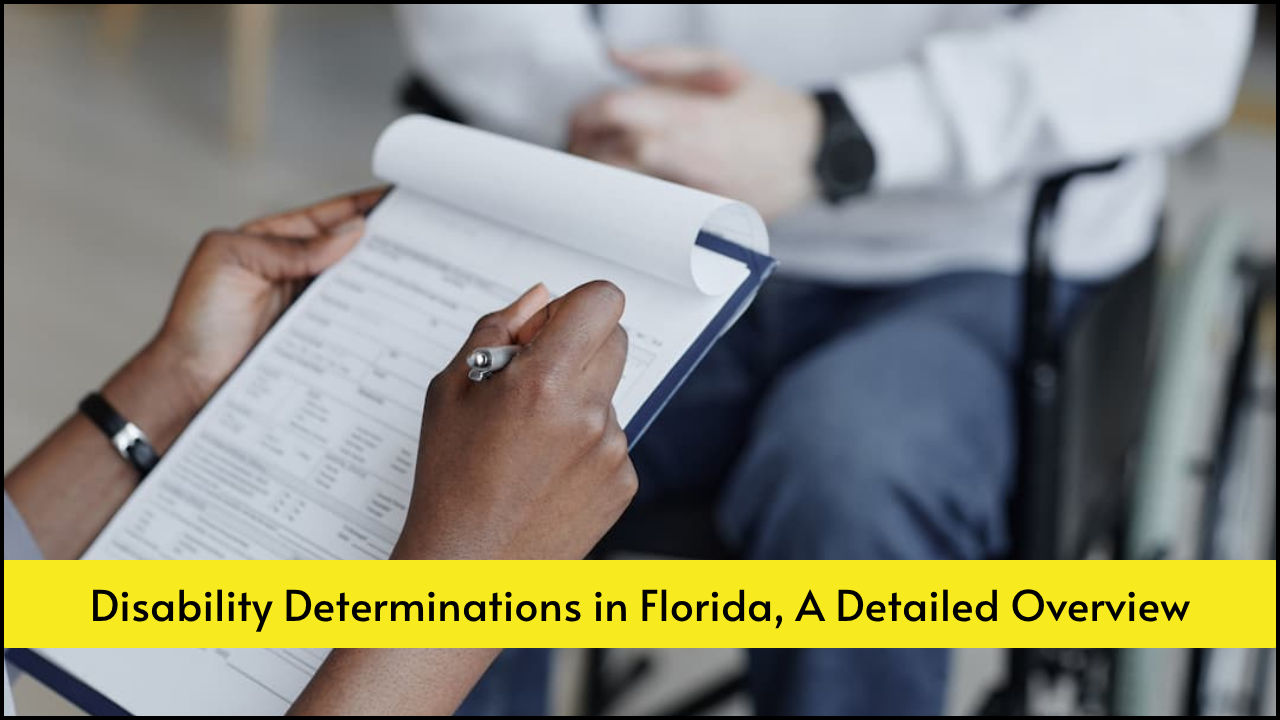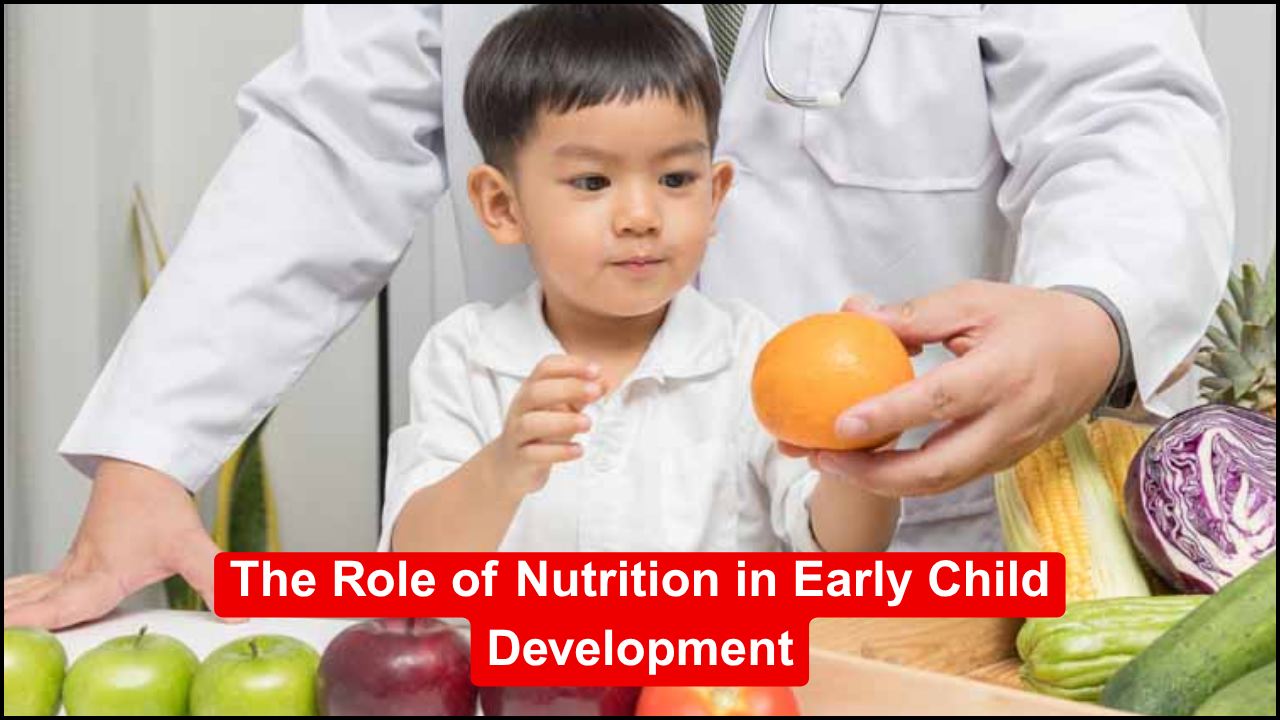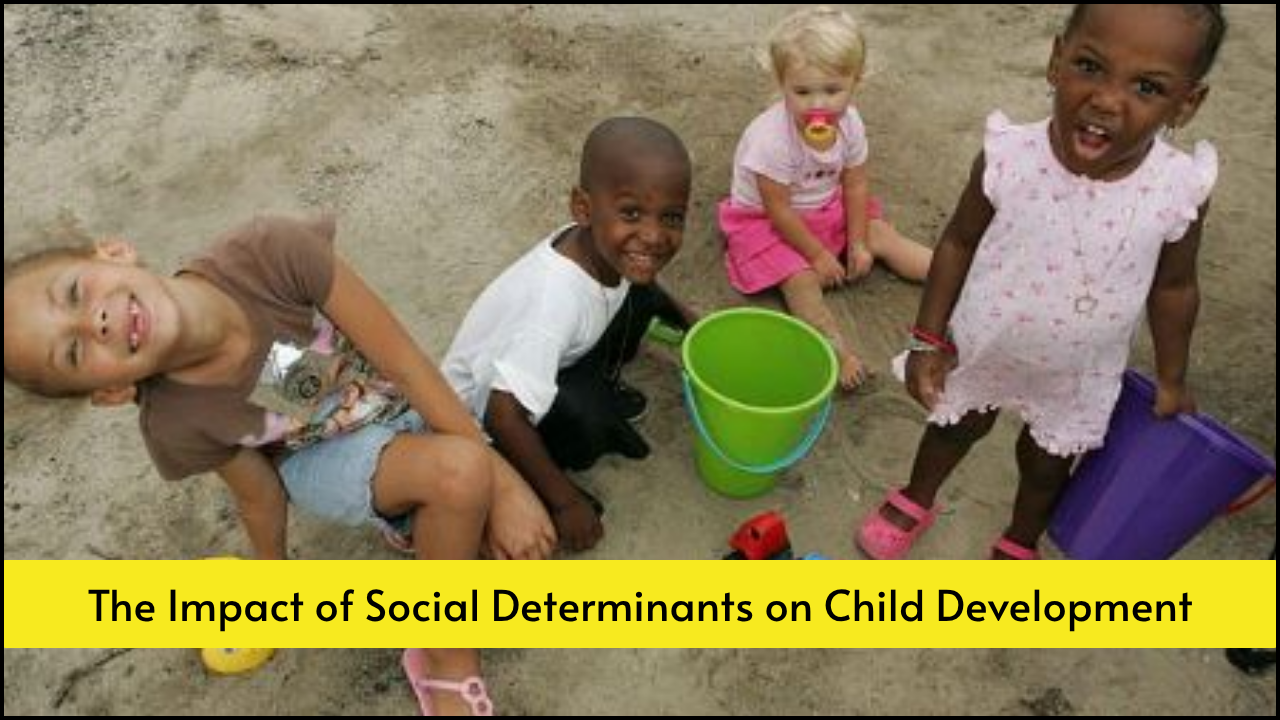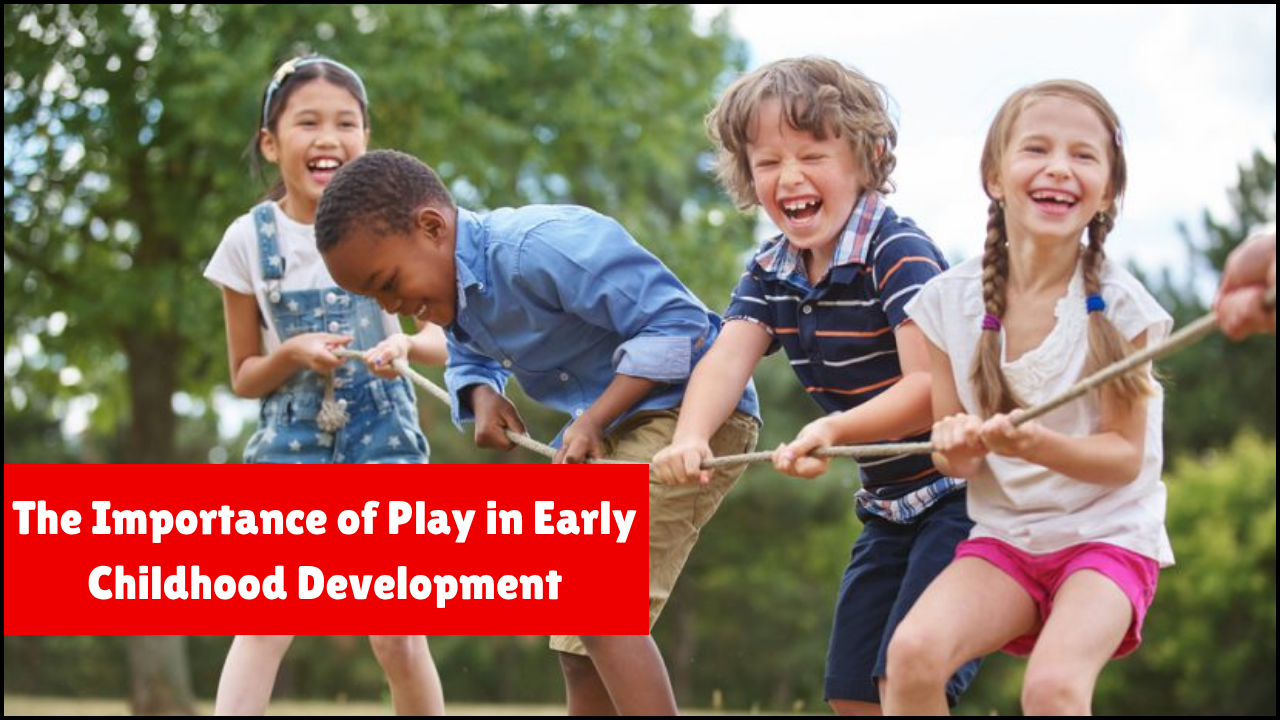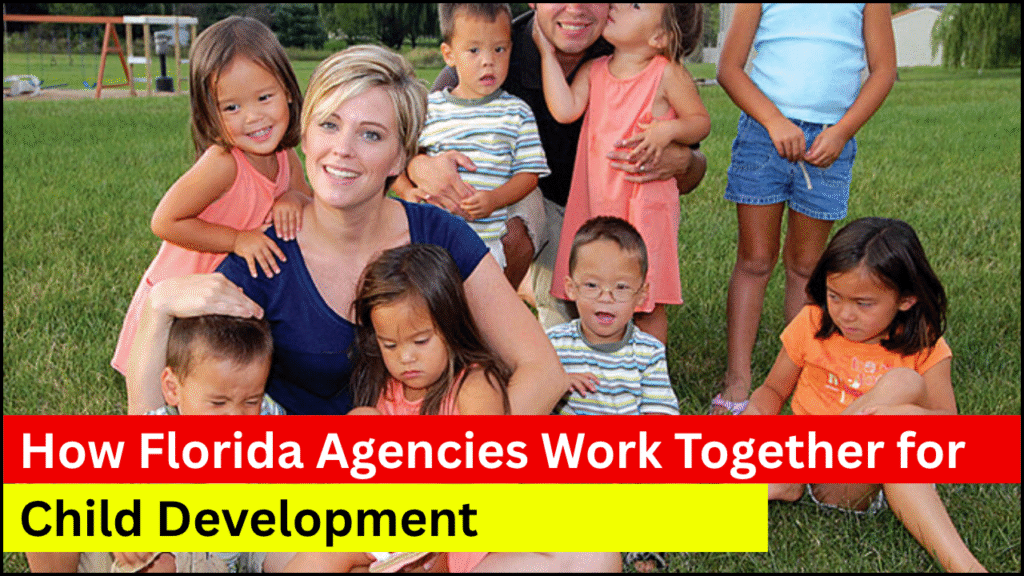
Florida’s commitment to child development involves a collaborative network of state and local agencies, each playing a distinct role in ensuring children’s health, education, safety, and emotional well-being. Agencies do not work in isolation; instead, they form partnerships and build integrated systems to address the complex needs of children from infancy through adolescence. Strong inter-agency coordination supports early childhood education, family services, health screenings, child welfare, and mental health services.
Table of Contents
Key State Agencies Involved in Child Development
- Florida Department of Education (FDOE)
- Develops and implements educational policies from preschool to high school
- Oversees Voluntary Prekindergarten (VPK) Education Program
- Works closely with early learning coalitions and local school districts
- Florida Department of Children and Families (DCF)
- Provides protective services, foster care, and adoption support
- Administers Child Care Licensing and Regulation
- Collaborates with courts, schools, and community agencies
- Florida Department of Health (DOH)
- Offers preventive healthcare, immunizations, and screenings
- Administers the Children’s Medical Services (CMS)
- Supports nutrition programs like WIC (Women, Infants, and Children)
- Florida Office of Early Learning (OEL)
- Governs early childhood education and school readiness programs
- Funds and monitors local Early Learning Coalitions
- Coordinates with VPK providers and childcare centers
- Agency for Persons with Disabilities (APD)
- Supports children with developmental delays and disabilities
- Works on inclusion, therapy access, and caregiver assistance
- Florida Guardian ad Litem Office
- Advocates for abused, neglected, and abandoned children in court
- Collaborates with DCF, foster homes, and judges
Interagency Collaboration Strategies
- Data Sharing Systems
- Create unified child records across agencies
- Help identify at-risk children early through shared alerts
- Example: Florida’s Early Childhood Integrated Data System (ECIDS)
- Joint Service Plans
- Develop personalized child development plans across departments
- Involve parents, therapists, educators, and medical professionals
- Align goals across education, health, and safety sectors
- Cross-Training of Staff
- Train professionals to understand the responsibilities of other agencies
- Improve coordination in handling complex child cases
- Support multi-disciplinary teams in child welfare assessments
Programs That Demonstrate Collaboration
| Program Name | Involved Agencies | Purpose |
|---|---|---|
| Early Steps Program | DOH, CMS, local providers | Provides early intervention services for infants and toddlers |
| Healthy Families Florida | DCF, local non-profits, DOH | Prevents child abuse through home visits and parenting education |
| School Readiness Program | OEL, Early Learning Coalitions, FDOE | Offers affordable childcare and prepares children for kindergarten |
| Child Protection Team (CPT) | DCF, DOH, law enforcement, Guardian ad Litem | Assesses child abuse and coordinates investigation with medical experts |
| Florida KidCare | DOH, Florida Healthy Kids Corporation, AHCA | Provides low-cost health insurance for children |
| Children’s Mental Health System of Care | DCF, DOH, school districts, private behavioral health providers | Delivers mental health services for children with serious emotional needs |
Early Childhood Development Focus
- Voluntary Prekindergarten (VPK)
- Managed by the Office of Early Learning and the Department of Education
- Offers free education for 4-year-olds to build pre-literacy and social skills
- VPK providers follow state standards and undergo quality assessments
- Early Learning Coalitions
- Located in every Florida county
- Act as local coordinators for School Readiness and VPK services
- Engage parents, schools, and social service providers
- Family Engagement Efforts
- Agencies host joint parent education workshops
- Encourage family involvement in Individualized Family Service Plans (IFSPs)
- Support hotlines and helplines staffed by multiple agency representatives
Child Welfare and Protection Systems
- Foster Care Coordination
- DCF licenses and monitors foster families with support from community-based care (CBC) organizations
- DOH and APD ensure children with medical or developmental needs receive adequate care
- Guardian ad Litem ensures the child’s voice is heard in court decisions
- Abuse Reporting and Response
- Centralized abuse hotline managed by DCF
- Multi-agency investigations ensure safety and comprehensive assessments
- Law enforcement collaborates with child protection teams for serious cases
Health and Developmental Screening Services
- Universal Screenings at Birth
- Conducted by hospitals under DOH guidelines
- Include hearing, vision, and metabolic disorder checks
- Follow-Up Assessments
- Referred to Early Steps or Children’s Medical Services
- Agency staff coordinate with pediatricians and therapists
- Developmental Surveillance in Childcare Centers
- Supported by OEL and local coalitions
- Tracks cognitive and motor milestones using standardized tools
Inclusive Support for Children with Disabilities
- Medicaid Waivers through APD
- Offer financial assistance for therapies and assistive technology
- Require interagency eligibility verification and approval
- Inclusive Classrooms in Public Schools
- FDOE mandates accommodations and special education plans
- Collaboration between general and special education staff
Community Partnerships and Local Agency Networks
| Region/City | Example Initiative | Agencies Involved |
|---|---|---|
| Miami-Dade | Thrive by 5 Collaborative | ELC Miami-Dade, DOH, United Way, DCF |
| Tampa | Children’s Board Family Resource Centers | Hillsborough DOH, CBC, school district |
| Jacksonville | KidCare Enrollment Drives | Florida Healthy Kids Corp, DOH, local schools |
| Palm Beach | Strong Minds Network | ELC Palm Beach, behavioral health providers |
| Tallahassee | Early Childhood Crosswalk Project | Leon County Schools, DCF, DOH |
Benefits of Interagency Collaboration
- Improved Outcomes
- Children receive early interventions and preventive care
- Education readiness and developmental milestones are tracked and met
- Reduced Gaps and Overlaps
- Agencies prevent service duplication and information silos
- Children in transition (e.g., foster care) experience smoother service continuity
- Resource Efficiency
- Shared data systems and joint funding mechanisms reduce administrative costs
- Grants are co-applied for by agencies for broader impact
- Equity and Access
- Underserved populations are reached through mobile services and bilingual staff
- Children in rural and migrant communities receive integrated support
Challenges and Future Directions
- Funding Limitations
- Grants and budget cycles vary across agencies, leading to delays
- Agencies compete for overlapping resources at times
- Communication Barriers
- Inconsistent data formats or incompatible IT systems hinder full integration
- High staff turnover affects continuity in collaboration
- Need for Universal Protocols
- Agencies are working toward creating statewide coordination standards
- Uniform family engagement policies are in development
Closing Reflections
Florida’s child development framework is powered by robust interagency cooperation. Through formal partnerships, coordinated planning, and community involvement, agencies bridge gaps in healthcare, education, welfare, and family services. This holistic approach ensures every child receives the necessary support to thrive. Sustained investment in collaboration and innovation will continue to shape a healthier, more equitable future for Florida’s youngest citizens.


